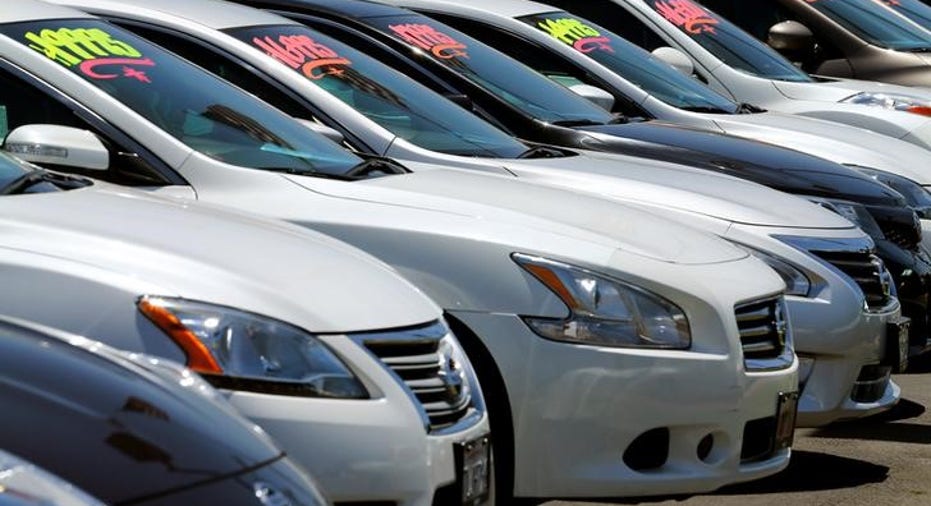After weak March sales, concerns rise over U.S. auto market outlook

Car dealers on Wednesday added to concerns about the state of the U.S. auto industry and how tough any downturn might be if its six-year recovery has ended.
In a conference call with media and analysts, officials of the National Automobile Dealers Association said they expected sales of cars and light trucks in the United States to dip to 17.1 million vehicles this year, high by historical standards but below 2016's record 17.55 million vehicles.
The NADA call came just two days after disappointing industry figures for March that showed an annualized sales rate of around 16.6 million units.
NADA chairman Mark Scarpelli, an Illinois car dealer, echoed concerns of some Wall Street analysts that values for used sedans were dropping as more vehicles were turned in when leases ended.
"It's a big number," Scarpelli said, referring to the numbers of leased cars headed to used car lots. "But it's not an insurmountable number." Falling values for these used cars are a problem for car makers and their finance companies, not dealers, Scarpelli said, because auto retailers can return the cars to the banks or manufacturers.
Wholesale car auction company Manheim predicts 3.6 million vehicles will come off lease in 2017 followed by 4.1 million in 2018. If historical patterns hold up, around 4.3 million cars will come off lease in 2019.
"Off-lease returns still remain the wild card," said Pete DeLongchamps, vice president of manufacturer relations at auto retail chain Group 1 Automotive Inc .
Investors are also watching rising interest rates, inventories of unsold vehicles and the generosity of profit-eroding discounts that automakers are offering to close deals. Those indicators are largely negative.
According to Cox Automotive data, consumer discounts were up 14.6 percent on the year in March. In their sales forecasts in the last two months, automotive consultancy firms J.D. Power and LMC have said discounts hit levels not seen since the recession in 2009.
Signs that the auto cycle is at its peak have weighed on the shares of Detroit automakers, casting a shadow over an industry central to President Donald Trump's pledge to rebuild American manufacturing.
General Motors Co shares are down 1.6 percent for the year, lagging broader market indexes, and Ford Motor Co shares are down nearly 7 percent. Shares in Fiat Chrysler Automobiles NV are up nearly 11 percent, but the company's market value is just $12.3 billion - about a quarter the value of electric car maker Tesla Inc .
WIDE RANGE OF FORECASTS
Forecasts for U.S. auto demand range widely, underscoring industry uncertainty.
Ford stuck this week to a forecast that 2017 sales would rise to 17.7 million vehicles while the NADA and other forecasters expect them to hover around 17 million. Consultancy AlixPartners expects U.S. new vehicle sales to reach 17.5 million this year, but forecasts a drop to 16.6 million in 2018 and 15.2 million in 2019 before a slow recovery.
Industry executives point to solid consumer confidence, low interest rates, rising transaction prices and an old car fleet on America's roads, where the average vehicle is over 11 years old, as they give voice to guarded optimism.
If the U.S. auto market downshifted to a 16 million vehicle annualized pace for more than 45 days, that would be a concern, said GM's head of North American operations, Alan Batey.
���I don���t think we are going to see it,��� he said.
Wall Street will be watching to see how quickly automakers respond to slow sales and rising inventories heading into the summer months. One way to cut stocks of unsold cars is to extend traditional summer assembly plant shutdowns.
Mark Wakefield, head of AlixPartners' automotive practice in the Americas region, said car production has already has come down, a sign that industry is showing more discipline than in past cycles.
"The real test comes when an (automaker) defects in a large way and starts going for share and volume and dropping prices dramatically," Wakefield said. "What do the others do and how does the market manage itself?"
(Reporting by Nick Carey; Editing by Tom Brown)